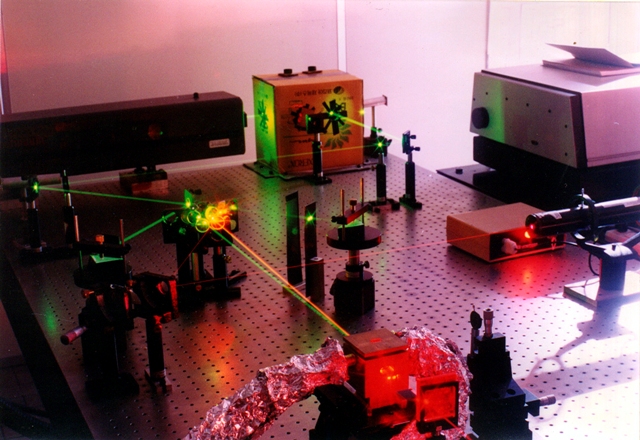Apr 14 2015

Rodolfo Cortés Martínez, member of the Center for Scientific Research and Higher Education (CICESE) in Monterrey, north of Mexico has discovered a measurement procedure on the basis of the evanescent field interference in the far field.
Scholars, researchers and scientists from different disciplines including pharmaceutical industry, mechanical engineering or biology employ nanoscale compounds in their projects. However, these compounds could be handled only with high precision tools to achieve high accuracy measurements.
"This is a noninvasive technique able to measure objects or compounds of nanometric dimensions without doing any damage. So that an object to be measured is placed between the light sources and the separation among them is considered, then we quantify the generated fringes through their periodicity and take account of our observation distance, so that we can determine the diameters and thicknesses of objects that are susceptible to damage by using other mechanical instruments.
"Another way to achieve this is to use just one light source instead of two, placing specific objects on it so that they scatter light and capture its overlaping with a specialized camera, so the interference fringes will give us a measure of the dimensions or separation between the objects immersed in the field of light”.
Physicist Cortés Martinez stated that the interferometric techniques are applied to detect the relative nanoscale displacement of objects and to move a tapered optical fiber in close proximity to a sample. A set of procedures is required to carry out this approach at the nanoscale "a mechanical kind, which uses a micrometer screw, and closing in at a microns distance approximate to 300nm, for which we developed an optical technique based in light interference that gives us a measure of approximation to the surface of the tip of what we want to characterize.”
"Our technique uses the reflection of light through the tip of an optical fiber, and the reflection causes interference with itself in space. That light is captured by a specialized camera and shows us the interference pattern of the two sources of light, and then the approach of these bands is the value we can look for. "
The new optical process has so far been employed in combined projects involving the NanoOptics Group at CICESE Monterrey and Héctor Rafael Siller Carrillo from the Technological Institute of Superior Studies in Monterrey (ITESM). Both the systems were used together in a near field microscope.
According to the optics specialist, the concept of light interference resulted in a publication that explains the process of creating two light sources on a prism surface, where a camera captures the light spread on the surface from a distance, thus obtaining required data from the superposition of light interference fringes.
Cortés Martínez is trained in Plasmon, a branch of nanoscale optics that involves the study of the processes of light interaction.
He also said that metrology techniques that require a nanoscale approach or non-invasive neither destructive measurement is carried out in applications including mechanical engineering, precision measurement of the wear of mechanical tools and others.
The projects that employed Cortés Martínez' optical technique have resulted to the two successful works that were published on international journals.
The Monterrey unit of CICESE is present at the Park of Research and Technological Innovation (PIIT) in the state of Nuevo Leon. Besides its integration with the ITESM and the Autonomous University of Nuevo León (UANL), the center is associated with different business associations and industrial chambers.